The human being is organic and artificial and coexists with these two aspects. The art of Paolo Grassino
Paolo Grassino, one of the most interesting contemporary Italian sculptors, proposes high-impact research that makes use of the most varied materials, from concrete to polystyrene, from wood to rubber, investigating themes such as the precariousness of our world, the drifts of contemporary society, and our fragility. Grassino was born in Turin in 1967: his father Alfredo directed him to artistic disciplines from an early age. In 1984 he enrolled in art high school where he met and began to attend the studios of Italian artists such as Marco Gastini, Luigi Mainolfi, Gilberto Zorio, Michelangelo Pistoletto and Sergio Ragalzi. Since 1988 he has exhibited in solo and group shows and since 1991 he has continued his studies at the Accademia Albertina in Turin together with Luisa Rabbia, Saverio Todaro, Domenico Borrelli with whom he created a working group and shared his first workshops. In 2000, the GAM of Turin dedicated a solo exhibition to him that made his artistic research better known by national and international galleries and institutions. In 2008 he participated in the XV Quadriennale d’Arte in Rome. Luca Massimo Barbero in 2011 dedicates a solo room to him at the MACRO in Rome, and in the same year he participates in the Fourth Moscow Biennale. In 2012 his works are featured in museums such as the Frost Art Museum in Miami and the Loft Project ETAGI in St. Petersburg. Phillip Van den Bossche invites him to the 2012 Beaufort 04 Triennial of Contemporary Art by the Sea in Ostend, and in 2013 the IIC in Madrid dedicates a solo exhibition to him. In 2013 a volume published by Skira is published that collects the most significant works from 1992 to 2012, the book is presented on the occasion of the solo exhibition “Path in Three Acts” in the spaces of Milan at the Center for Contemporary Art Luigi Pecci. In these years he began his teaching career as a lecturer of the Sculpture Course and the Ornamental Plastics Course in the Academies of Fine Arts in Carrara, Palermo and then Brera and Turin. In 2019 he held a large solo exhibition in the historic rooms of Palazzo Saluzzo Paesana in Turin. In 2021 he takes part in the traveling exhibition “The Silk Road. Contemporary Art and Artists from Italy” organized by Farnesina with stops in museums in Kiev, Ankara, Tbilisi,Tashkent, Beijing, Xi’an. In 2023 he was invited by the city of Pinerolo to the Third Biennale Diffusa and held a solo exhibition entitled “Incursions” curated by Franco Fanelli in the historic Cavallerizza Caprilli and in the most significant places of the city. Grassino talks about his art in this conversation with Gabriele Landi.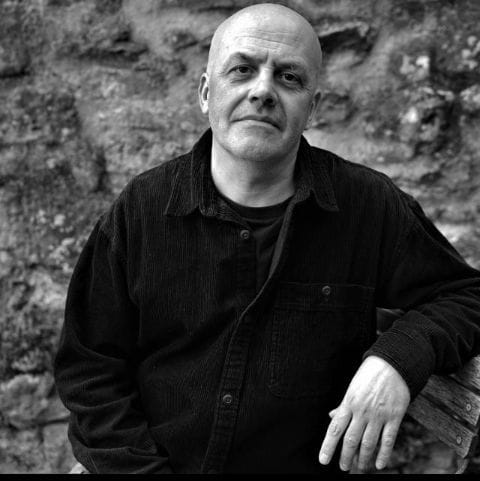
GL. Paolo, it often happens that an artist’s work is rooted in the mythical age of childhood: is this the case for you as well?
PG. My father Alfredo was a self-taught painter and introduced me to artistic practices as a child. I used to spend whole afternoons with him drawing and painting. I loved from the beginning the recollection that comes from creative exercise. I owe a lot to my father, and this aspect of existence is perhaps the most precious thing he gave me.
Did you have an artistic “first love”?
I have had many artistic loves. Each stage of my personal creative development has been accompanied by an “example” to follow. Today, no, I do not feel the need for them. Perhaps they are necessary loves only during training.
What studies did you do?
I attended the Primo Liceo Artistico and the Accademia Albertina in Turin, where I teach today.
You worked as an assistant for Luigi Mainolfi: What did you take away from this experience?
Luigi is a master of Italian sculpture, and I think I was lucky to meet him on my path at the age of 16. I worked in his studio at the same time as my high school and academic education. When my didactic training ended, so did my apprenticeship with him. Luigi remained a close friend along with other fellow students from that period.
Besides meeting Mainolfi were there any other encounters that left their mark?
In high school I met Sergio Ragalzi and we hung out for many, many years. He passed away this year and his death has left a void in Turin. I think Sergio was one of the most interesting and autonomous artists in the years following Arte Povera on the Italian territory.
Is drawing a practice that you frequent? What importance and what role does it play in what you do?
One should first understand what is meant by drawing. For my works I make small pen marks that many times are not followed. At the same time as the sculptures and installations I make works with ink on paper that for many years have remained private and rarely public. Next year I will make a solo exhibition with this type of work.
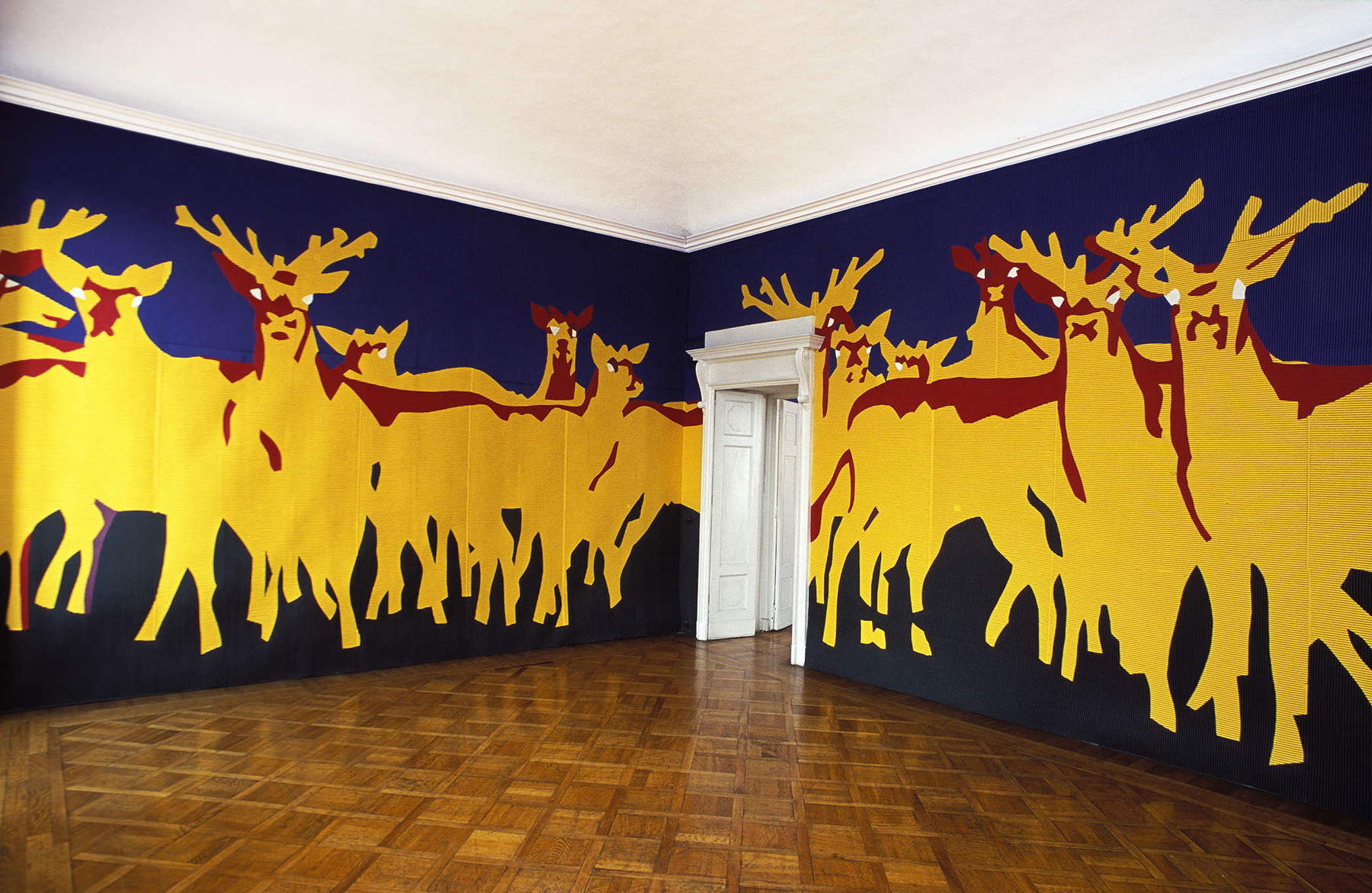
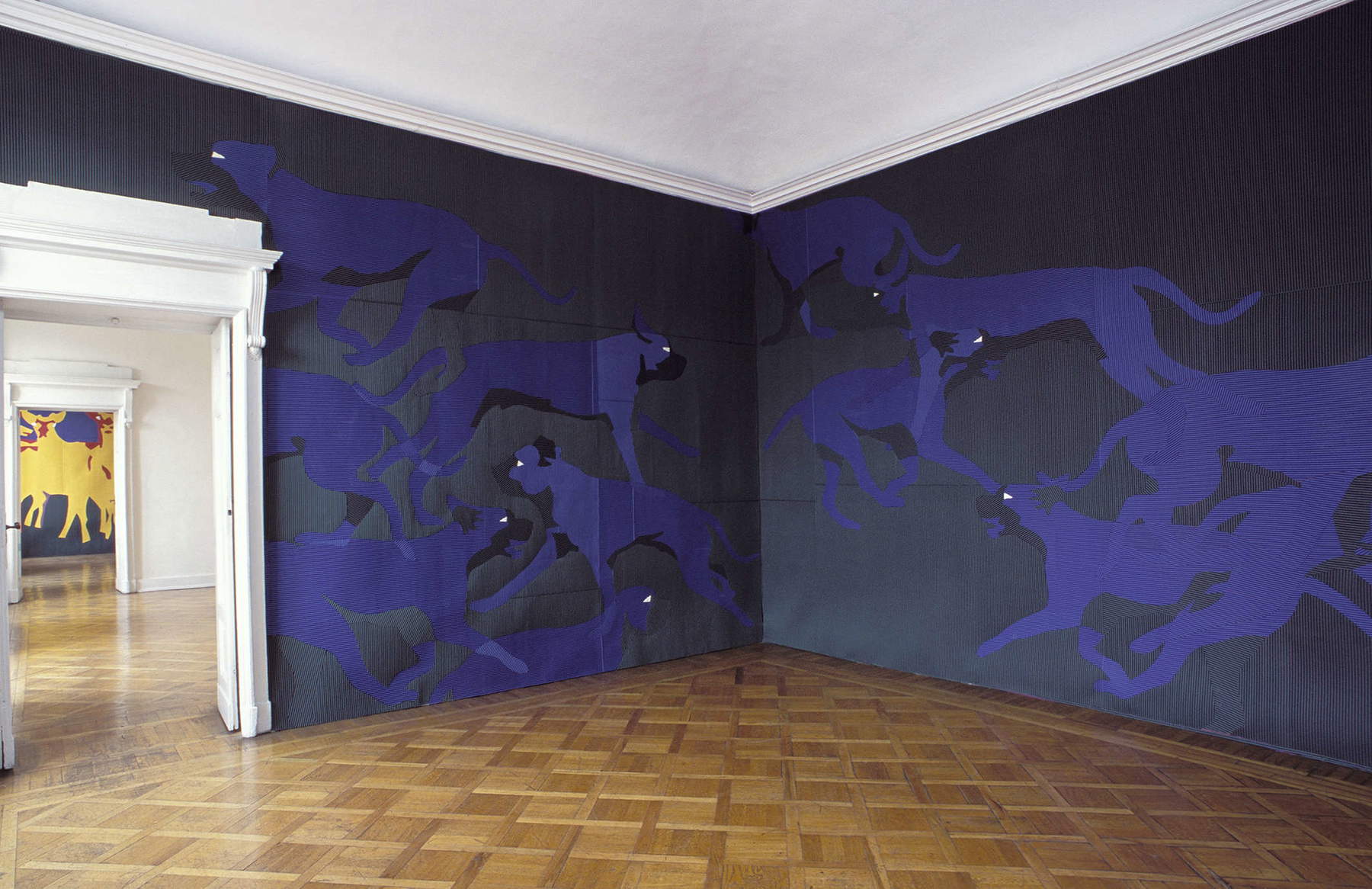
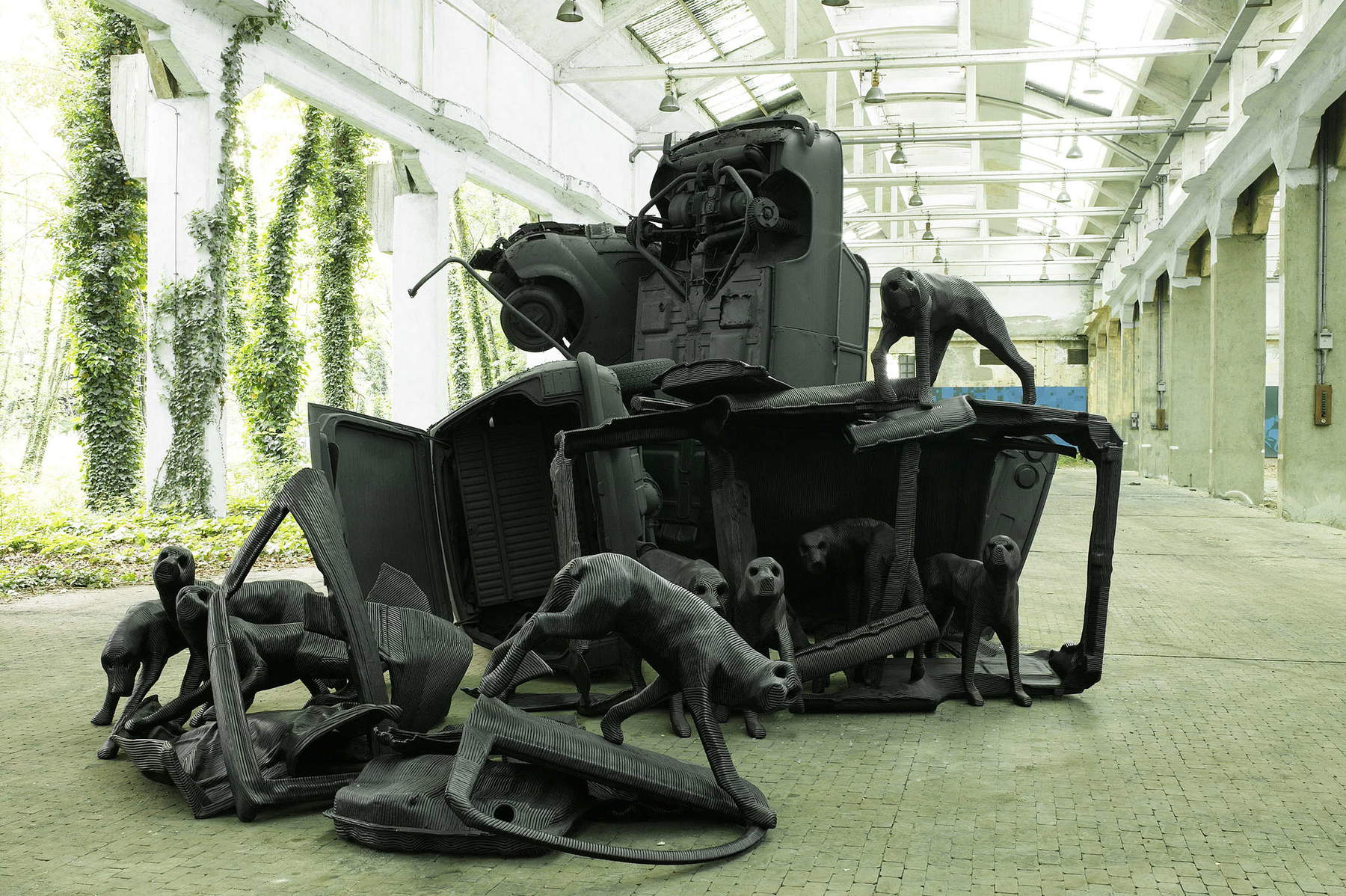
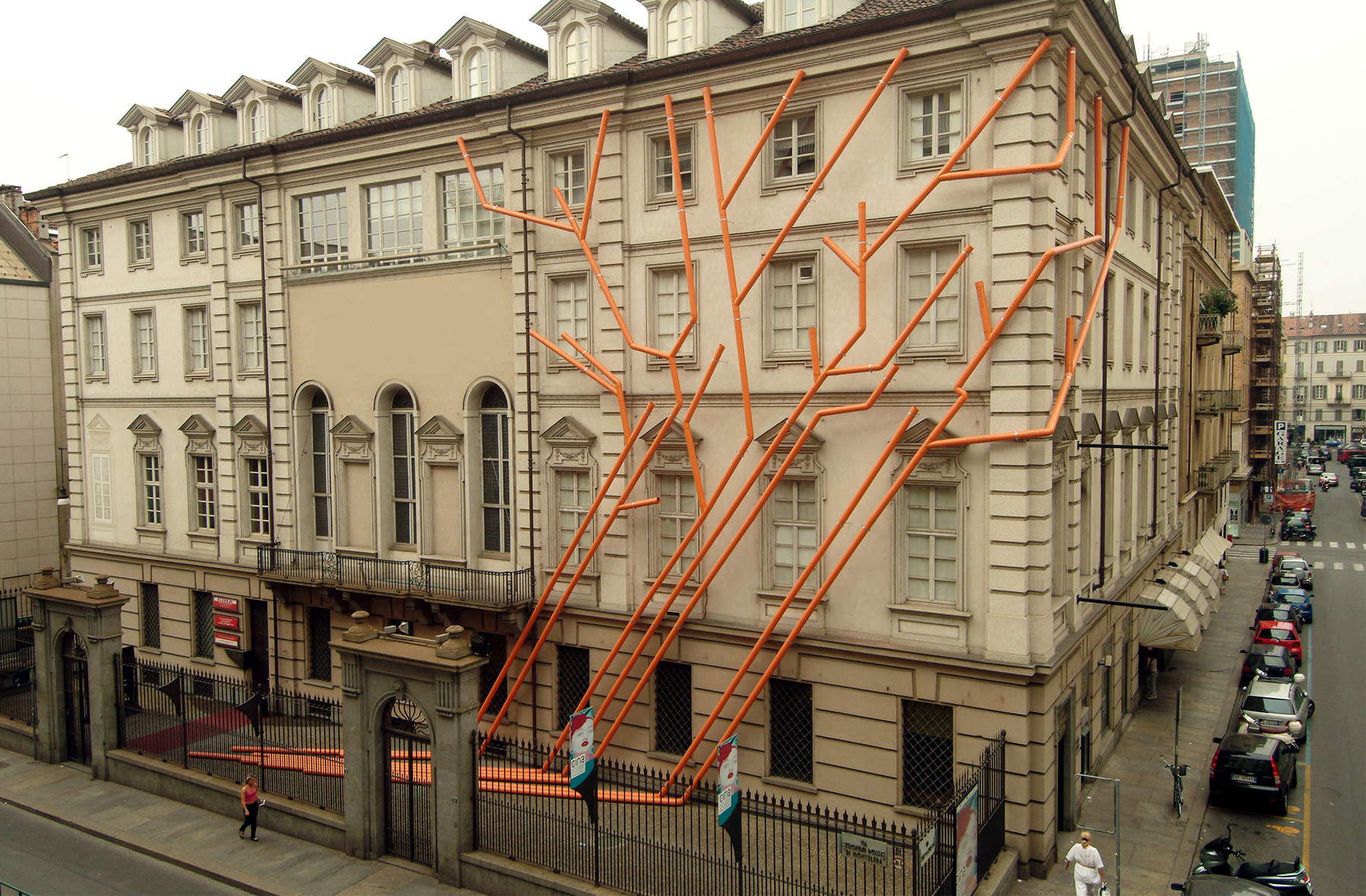
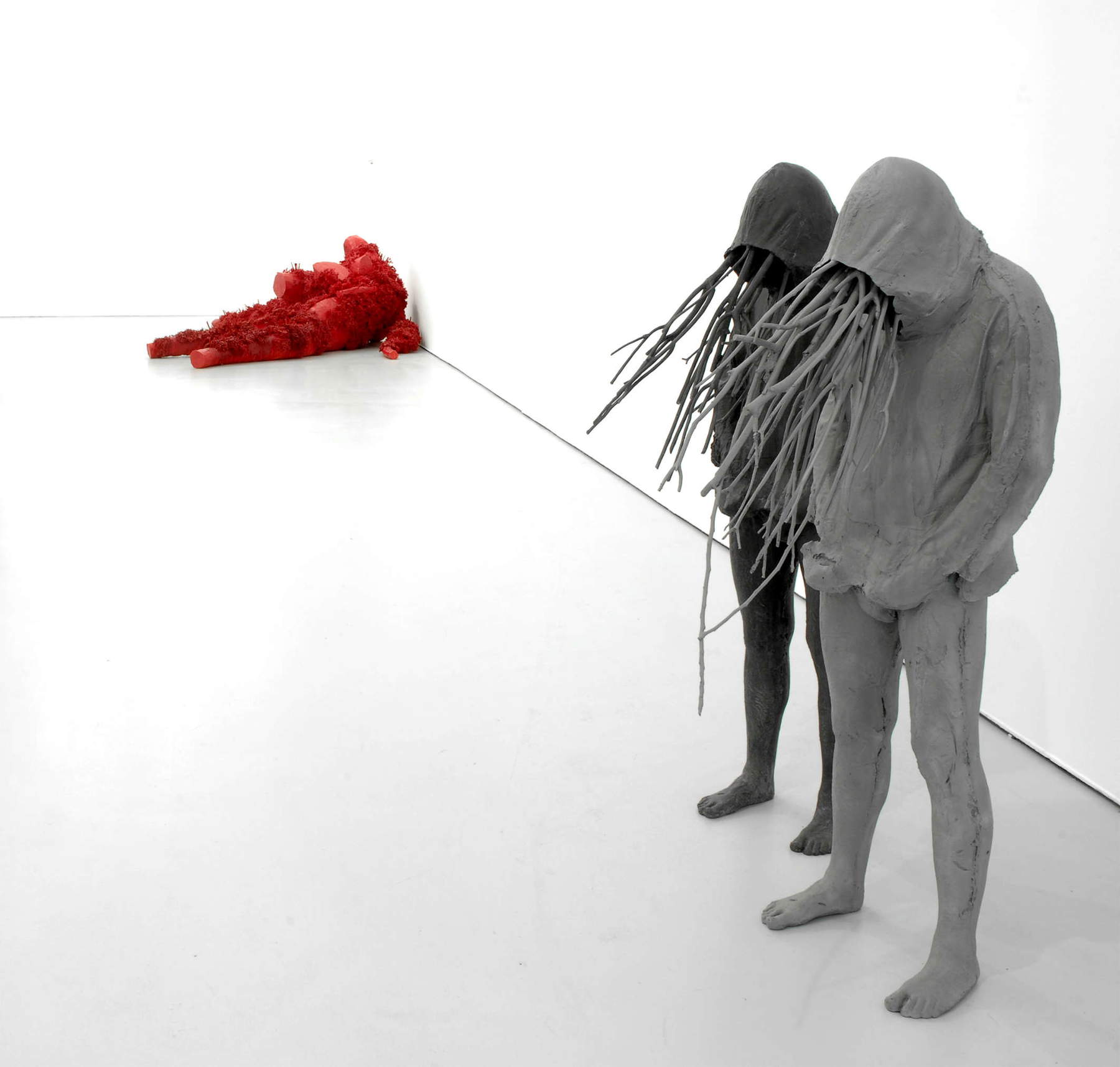
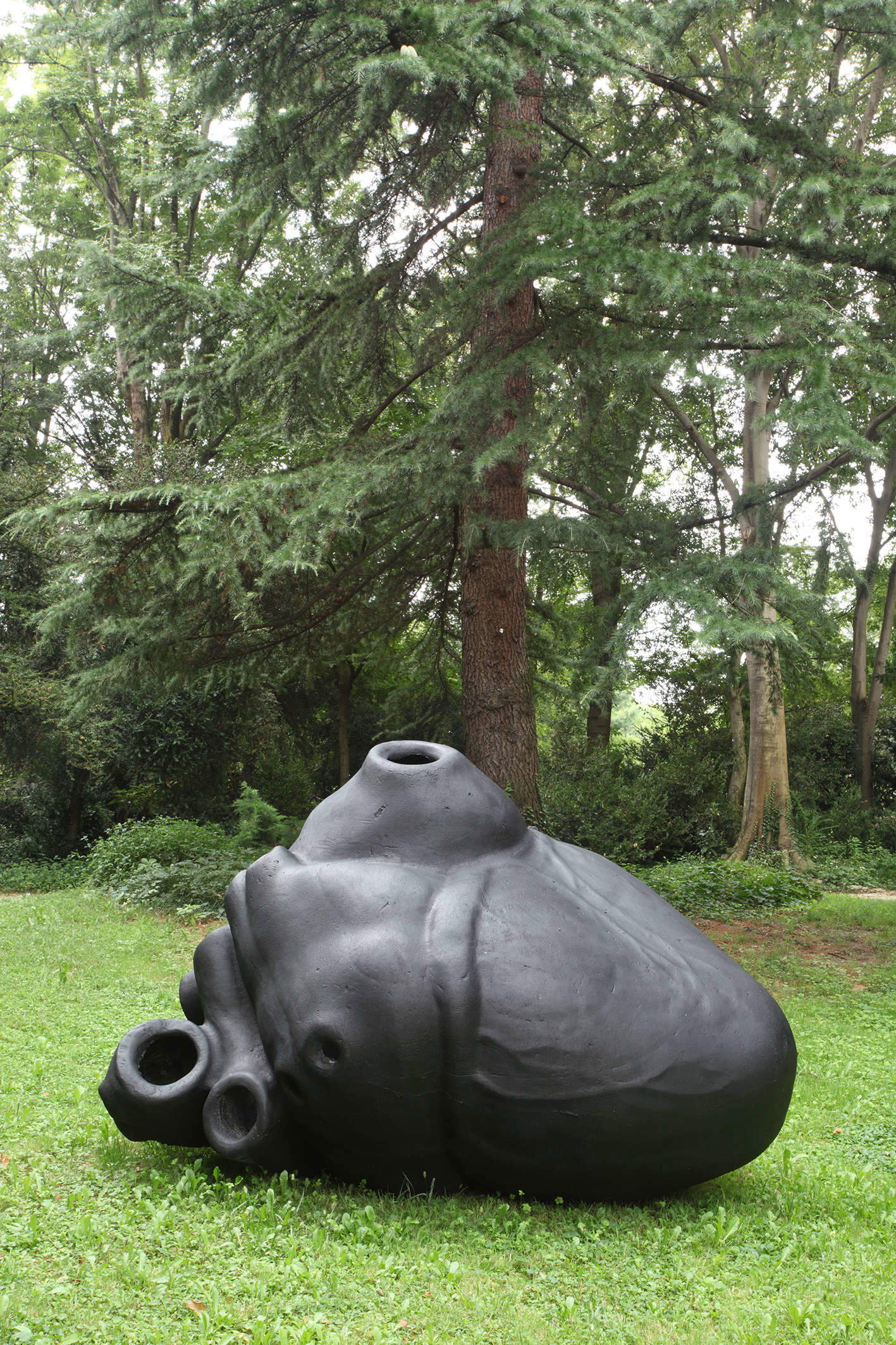
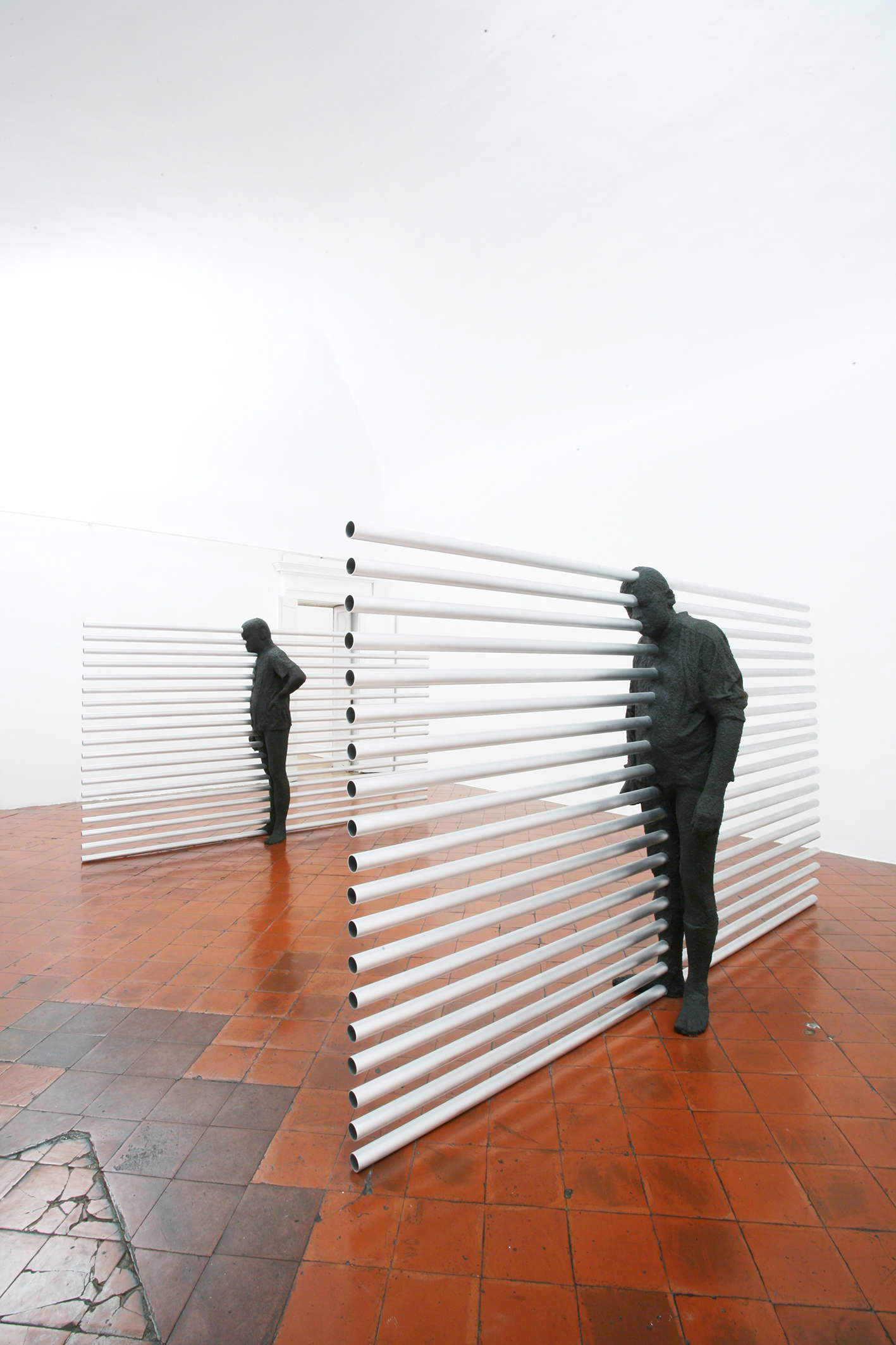
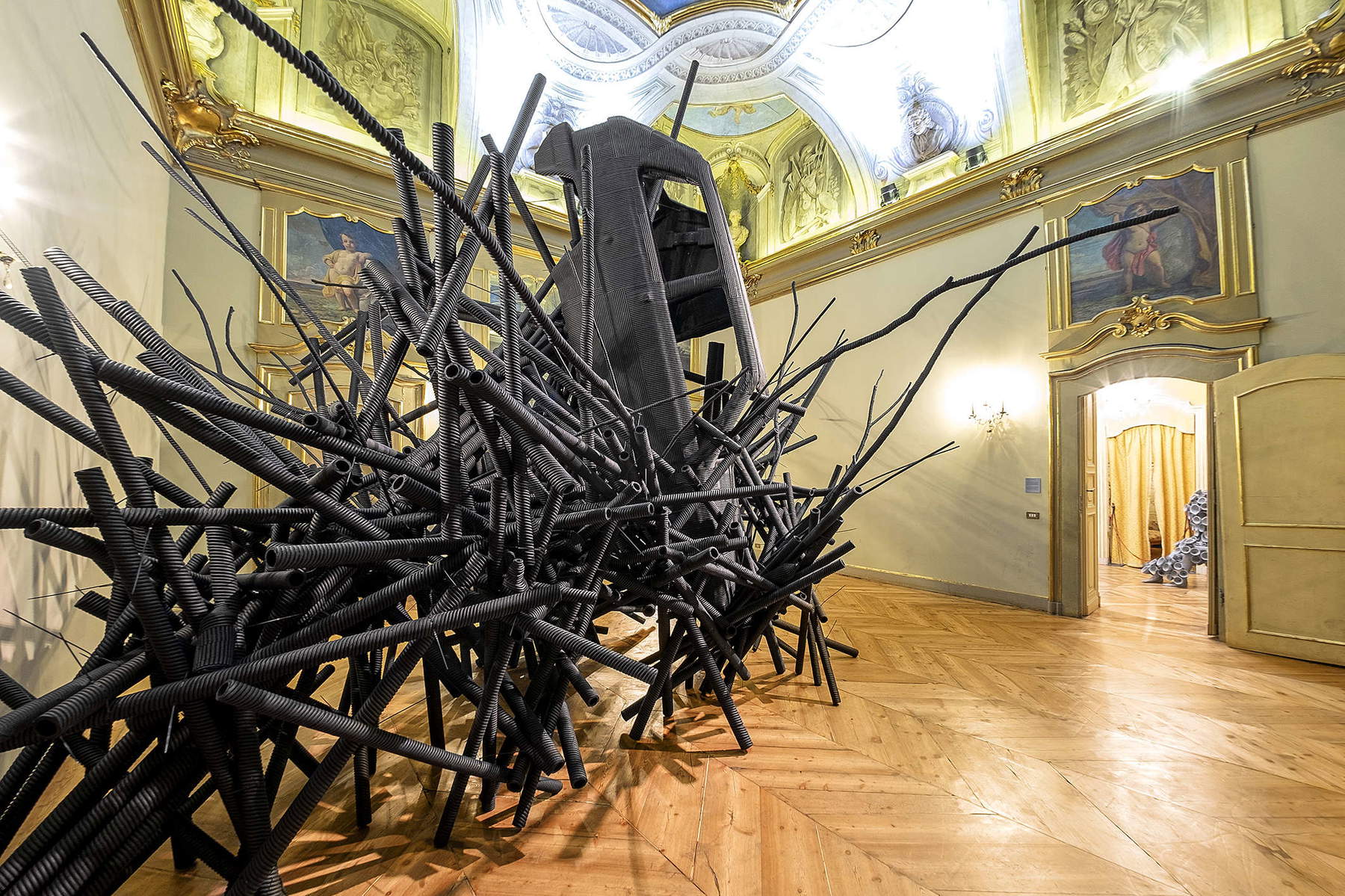
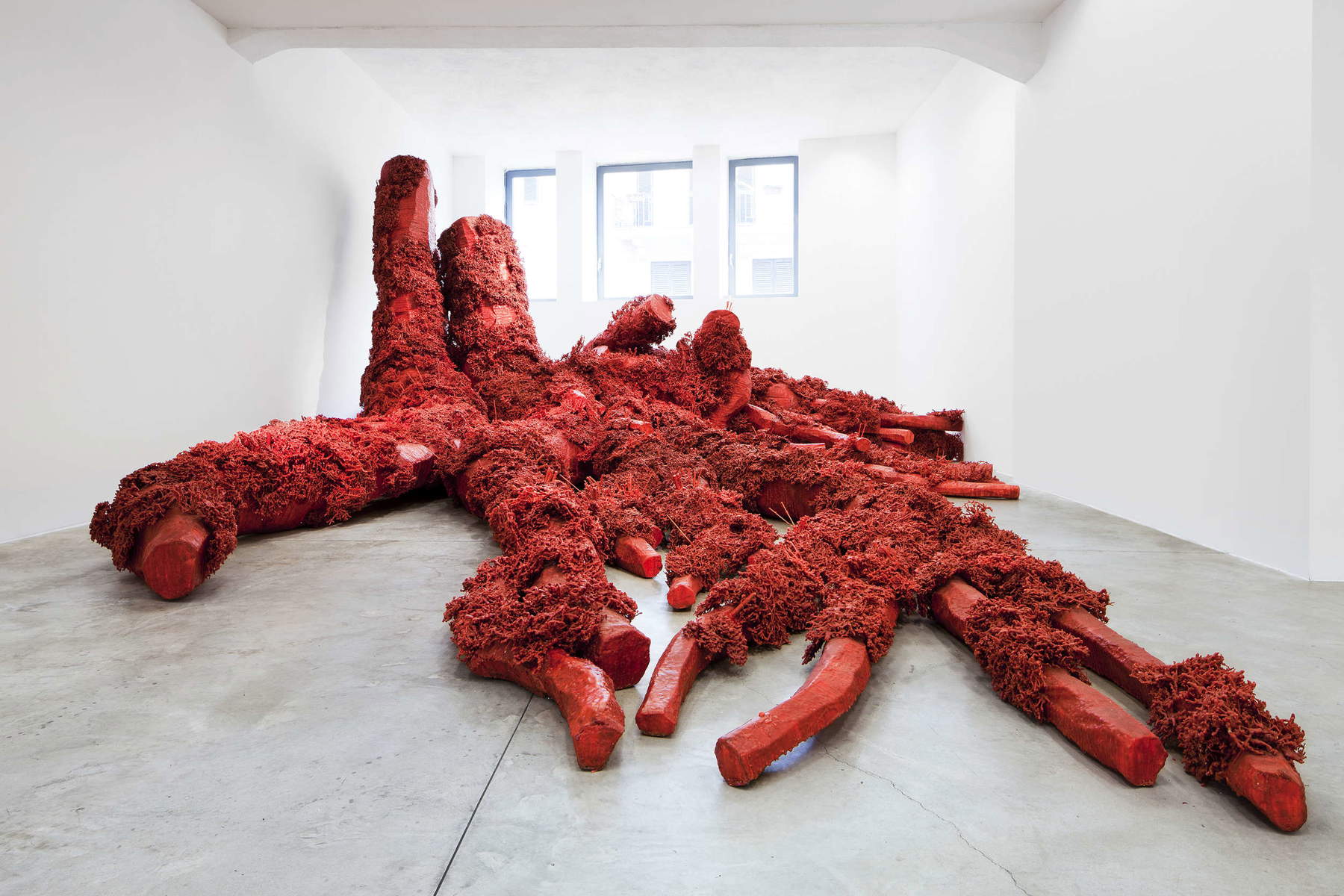
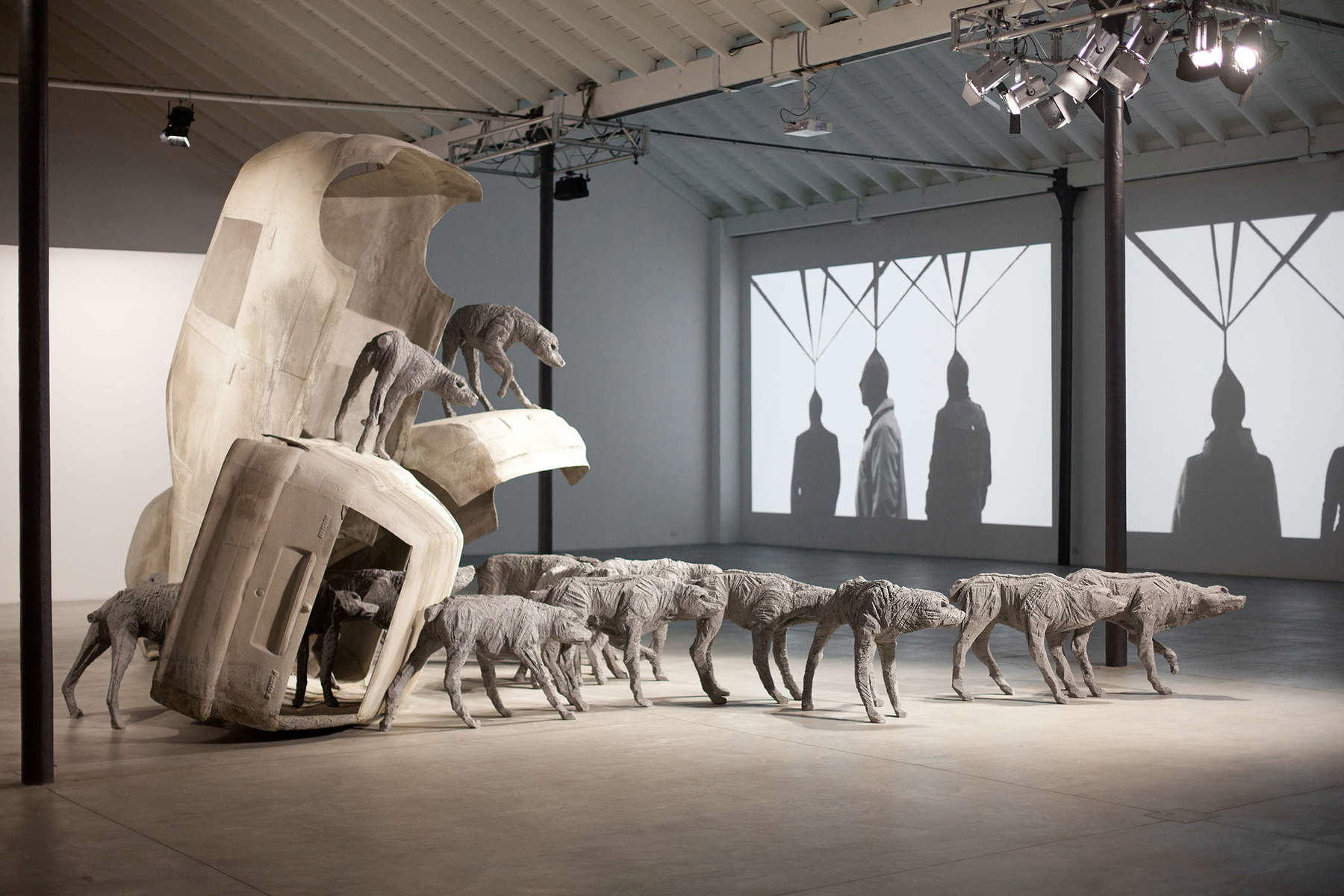
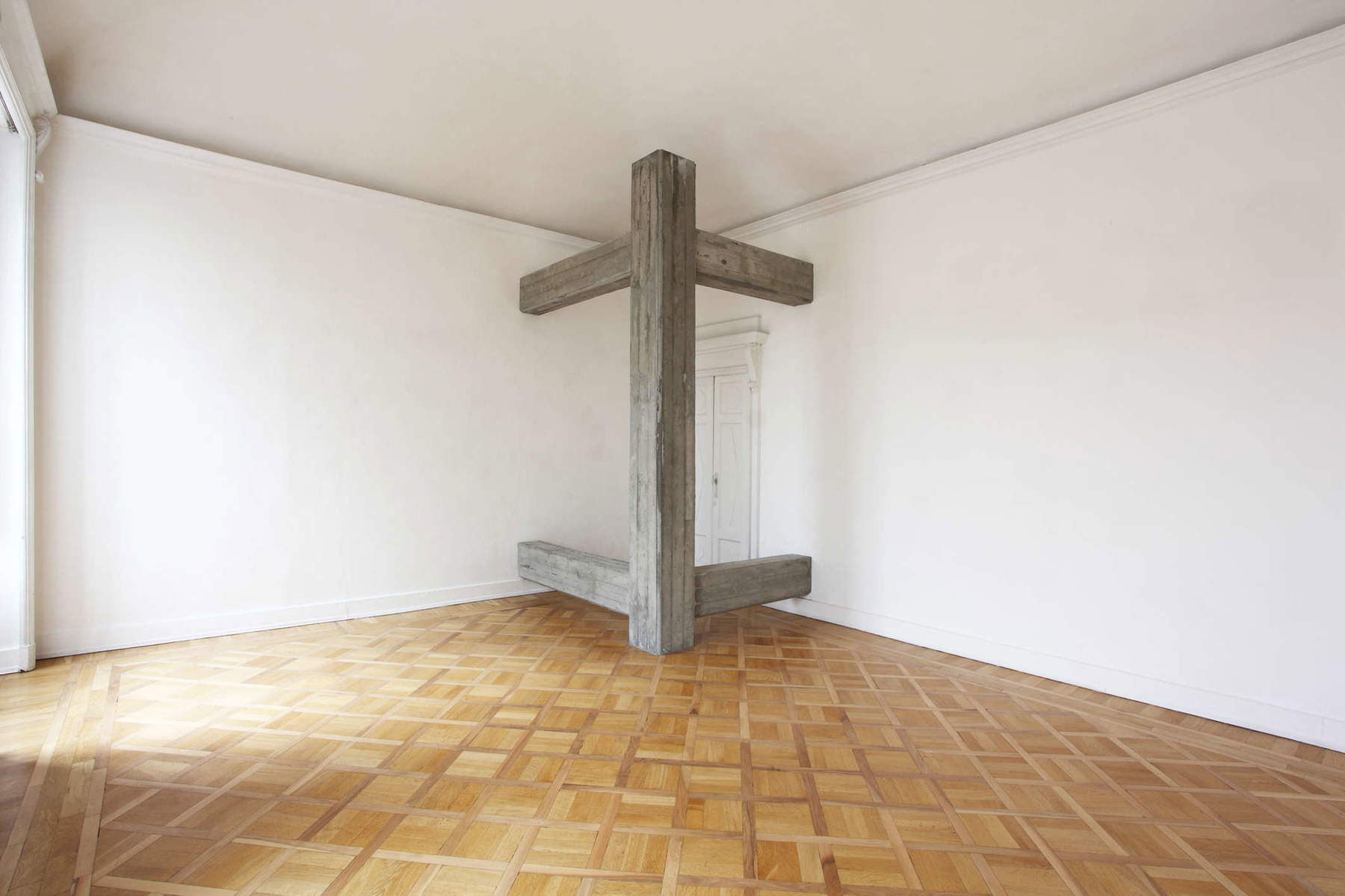
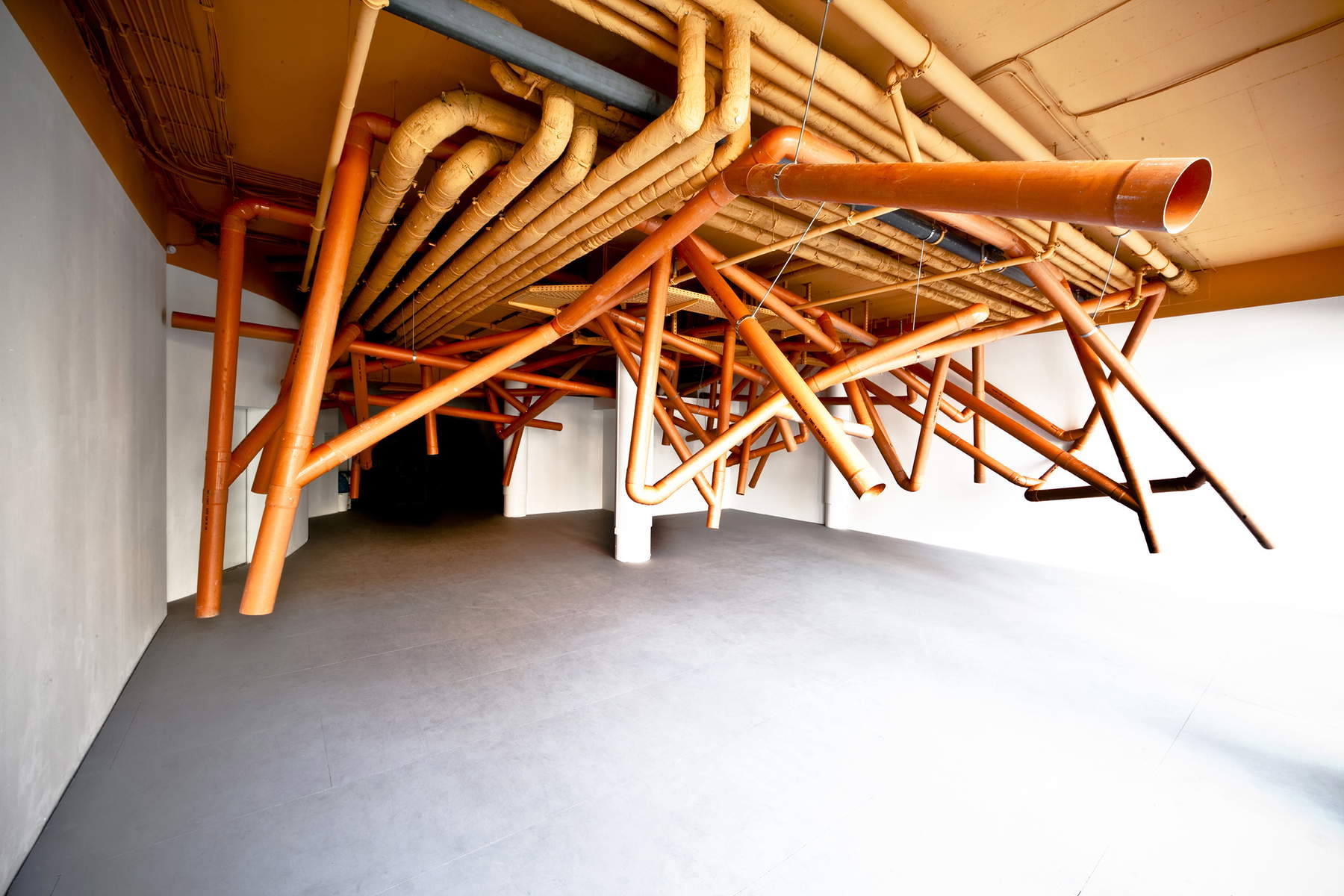
I’d like to ask you about your idea of time and space and the idea of transformation that often recurs in what you do?
Of course for those who make sculpture, space is fundamental. Sculpture by its physical presence creates an extension that did not exist before. Time absorbs the work, transforms it, finishes it not only objectively, and if it does not fit, it erases it.
Does the idea of staging matter in what you do?
I look for a temperature, for silences, for cues that lead into contexts that are not always clear or balanced. This aspect belongs to dramaturgy, to staging that leads toward visions belonging to the uncertain.
Can you talk more extensively about the relationship between your work and the audience that comes to see it?
Sometimes the audience observing my work uses the word “uncanny.” Perhaps there is also this aspect in my works but I think it belongs only to the surface.
In your work, in addition to the suggested or manifest human presence, deer, dogs often appear--what is your idea of nature?
Deer and dogs transport toward conflict. What I would like to make evident is the divergence between the parties. The deer since ancient times has been a symbol of sacrifice while the dog is a weapon trained for hunting, for warfare.
Are you interested in the mixture of organic and artificial ?
Many of my works emphasize this duality which in some cases is constructive research and in other cases is grim destruction. Man contains these two aspects and lives with them with relative dysfunction.
How do you choose the materials you work with?
It is the subject that chooses what to express itself with. Each subject has its own object or material waiting for it to add up into one act.
In your work, the uncanny aspect of the images you enact, what role does it play?
I want the viewer to ask questions. Art has this task and its responsibility is to the context that contains it. The question is necessary to begin to construct answers.
Is the imaginative dimension of your work also linked to a narrative aspect?
Narrative is contained in my works but it is distorted, ambiguous, open to multiple interpretations so as not to be totally graspable.

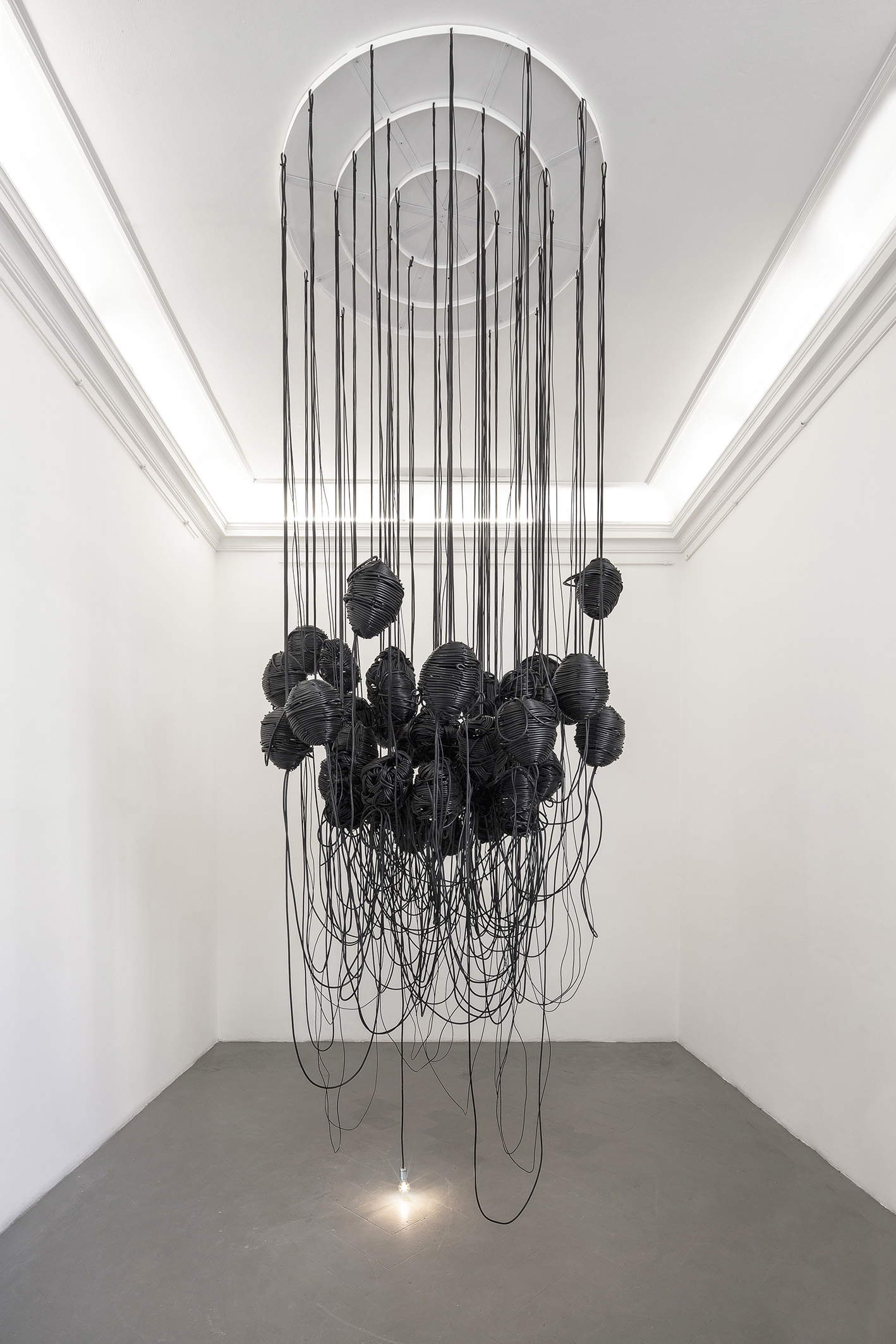

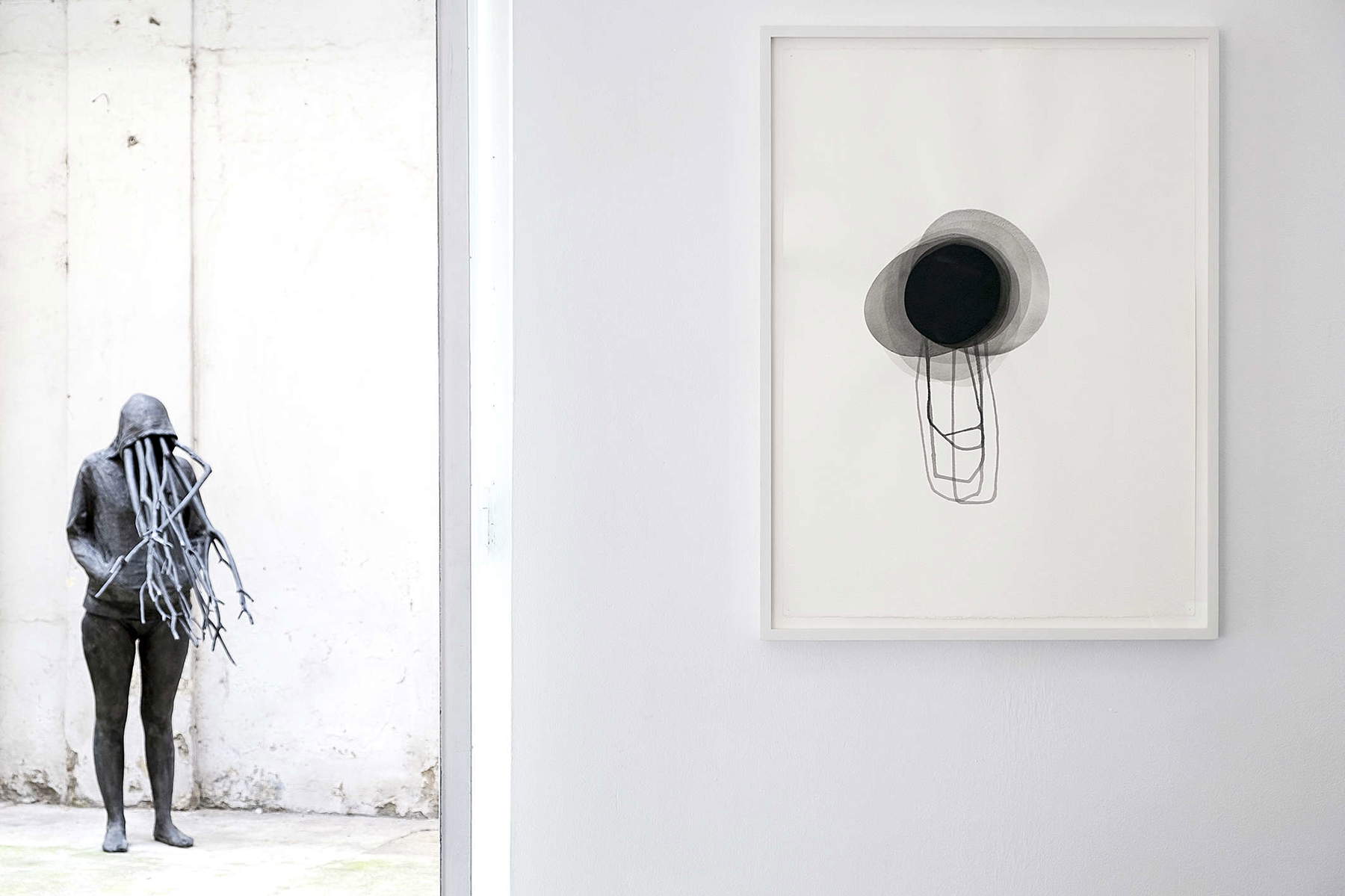
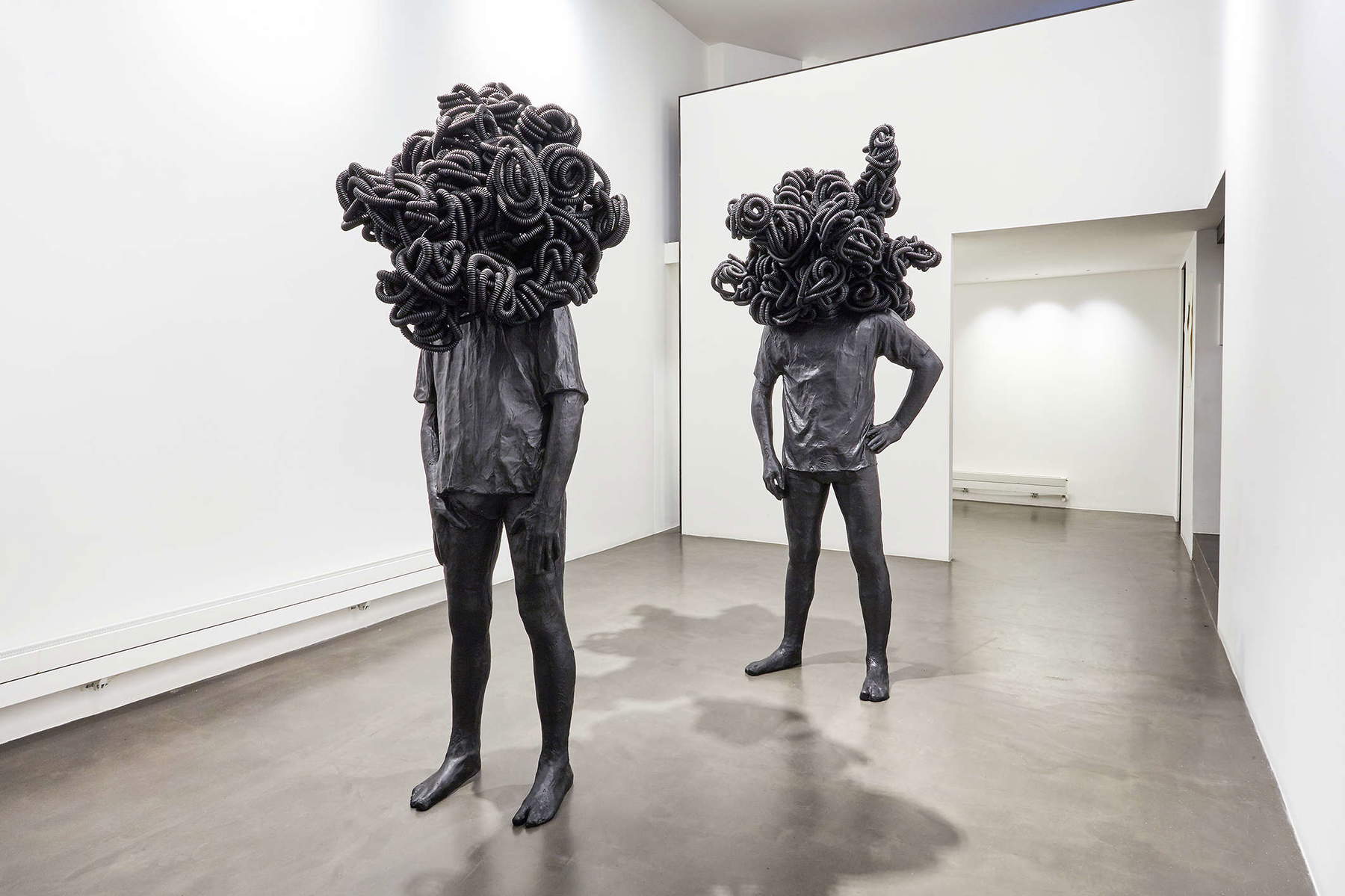
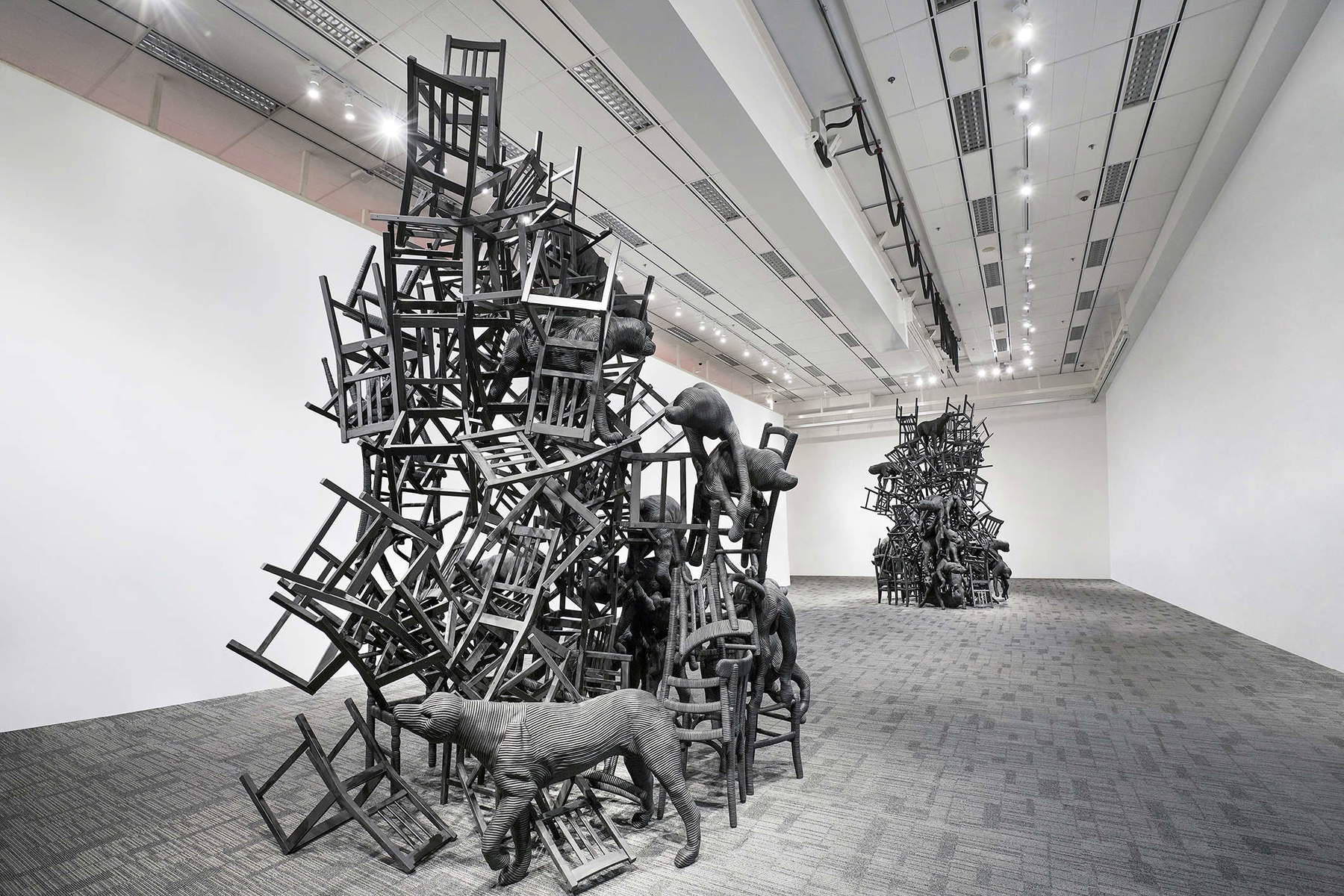
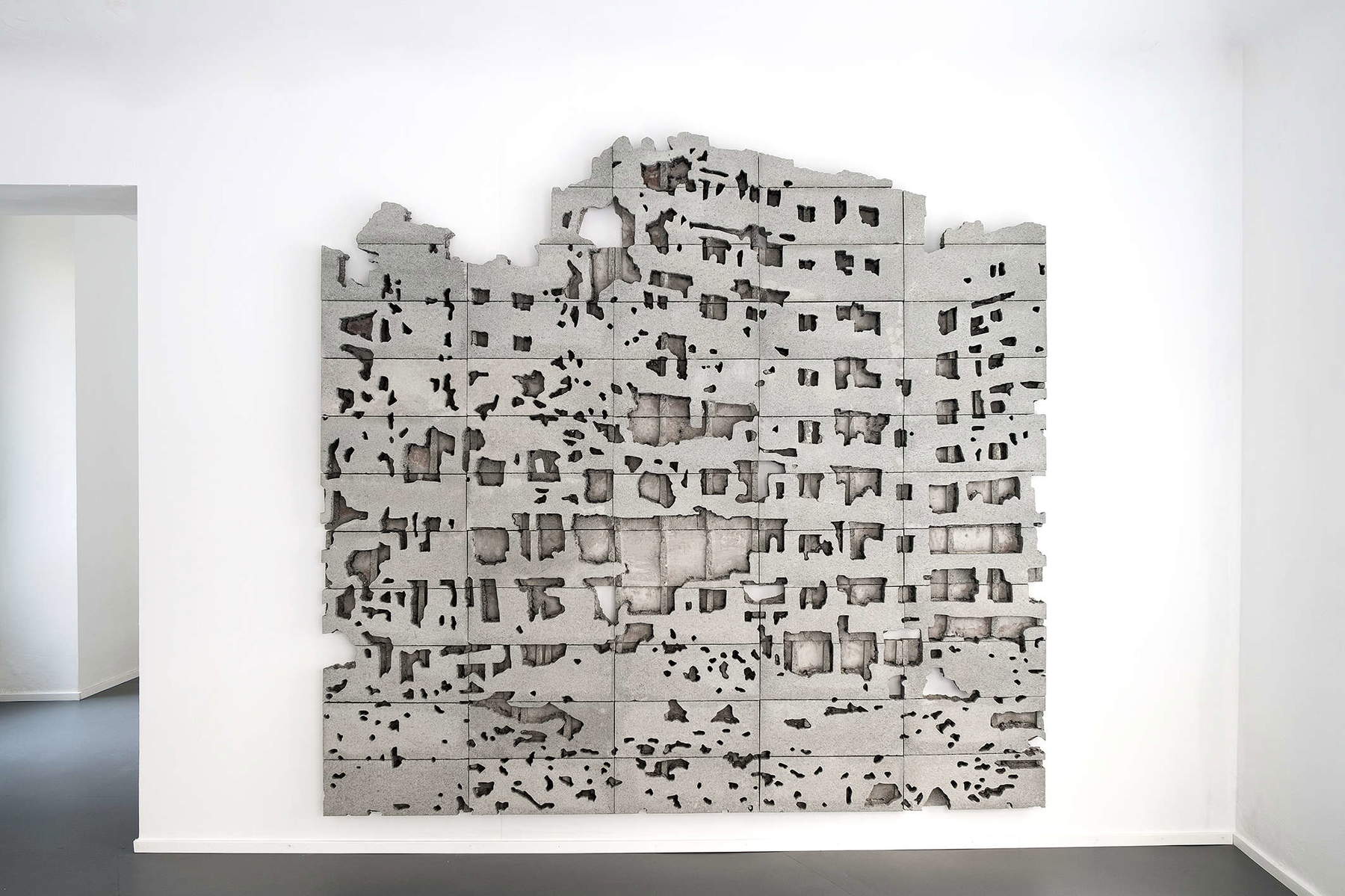
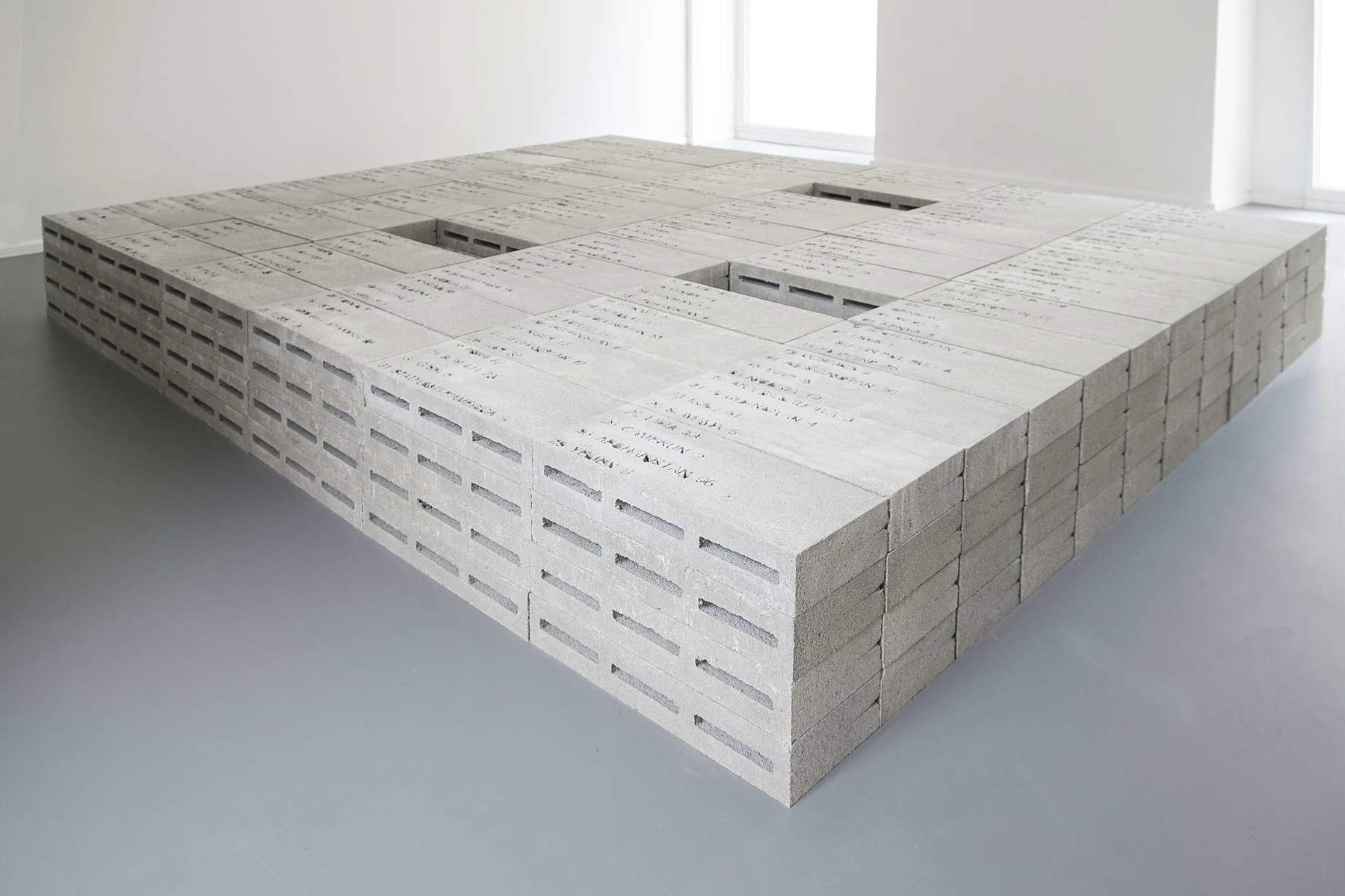
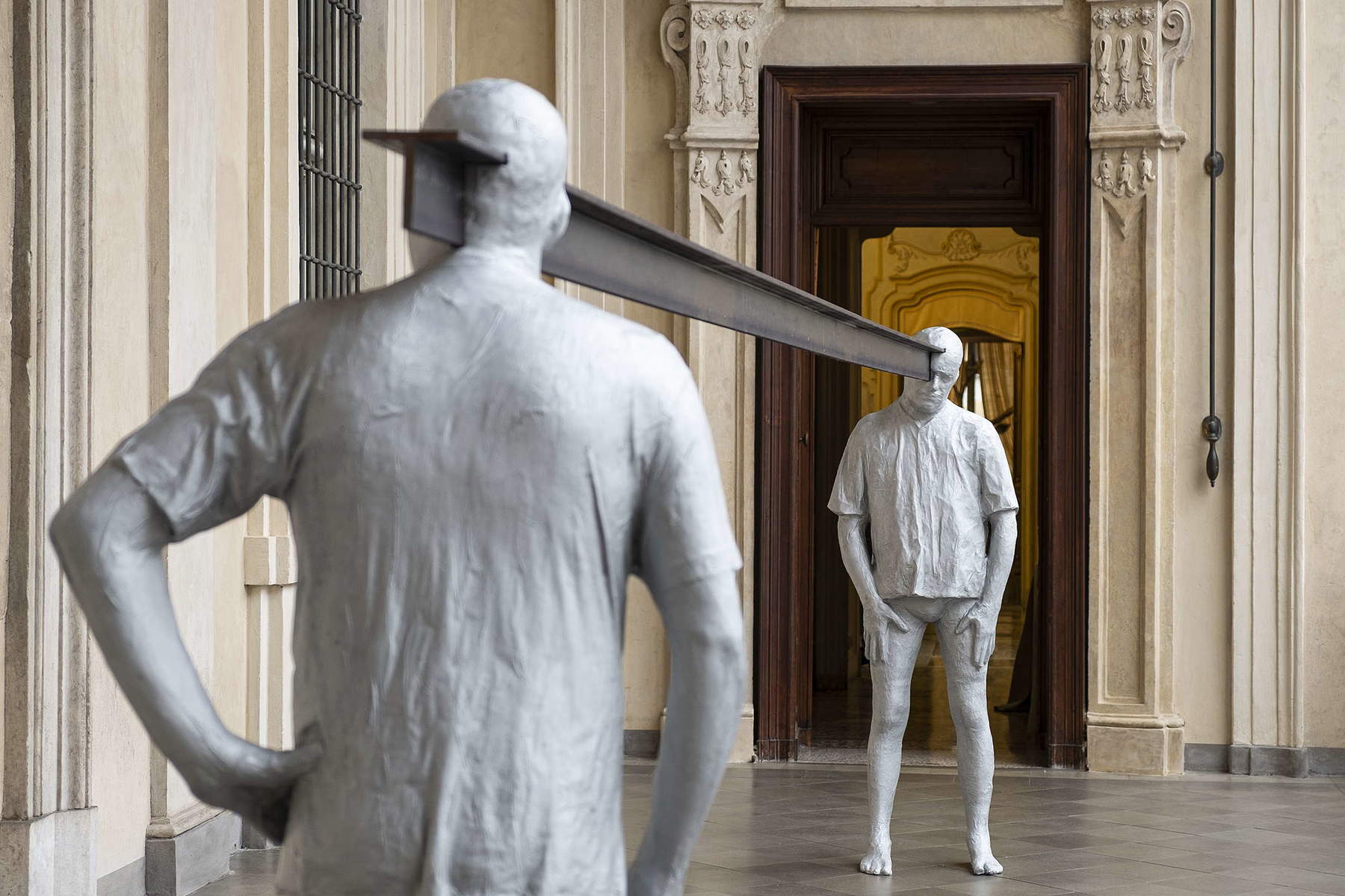
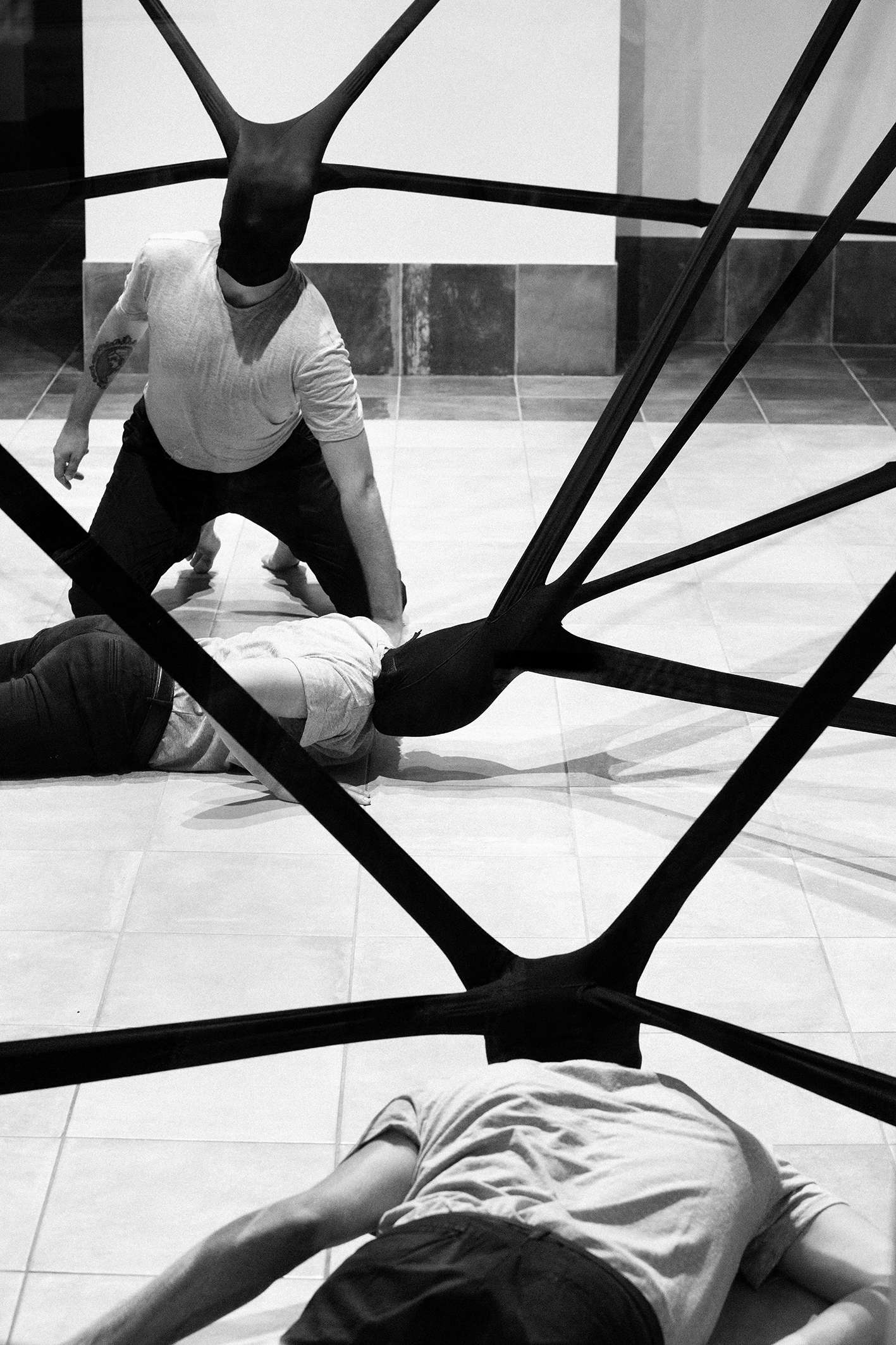
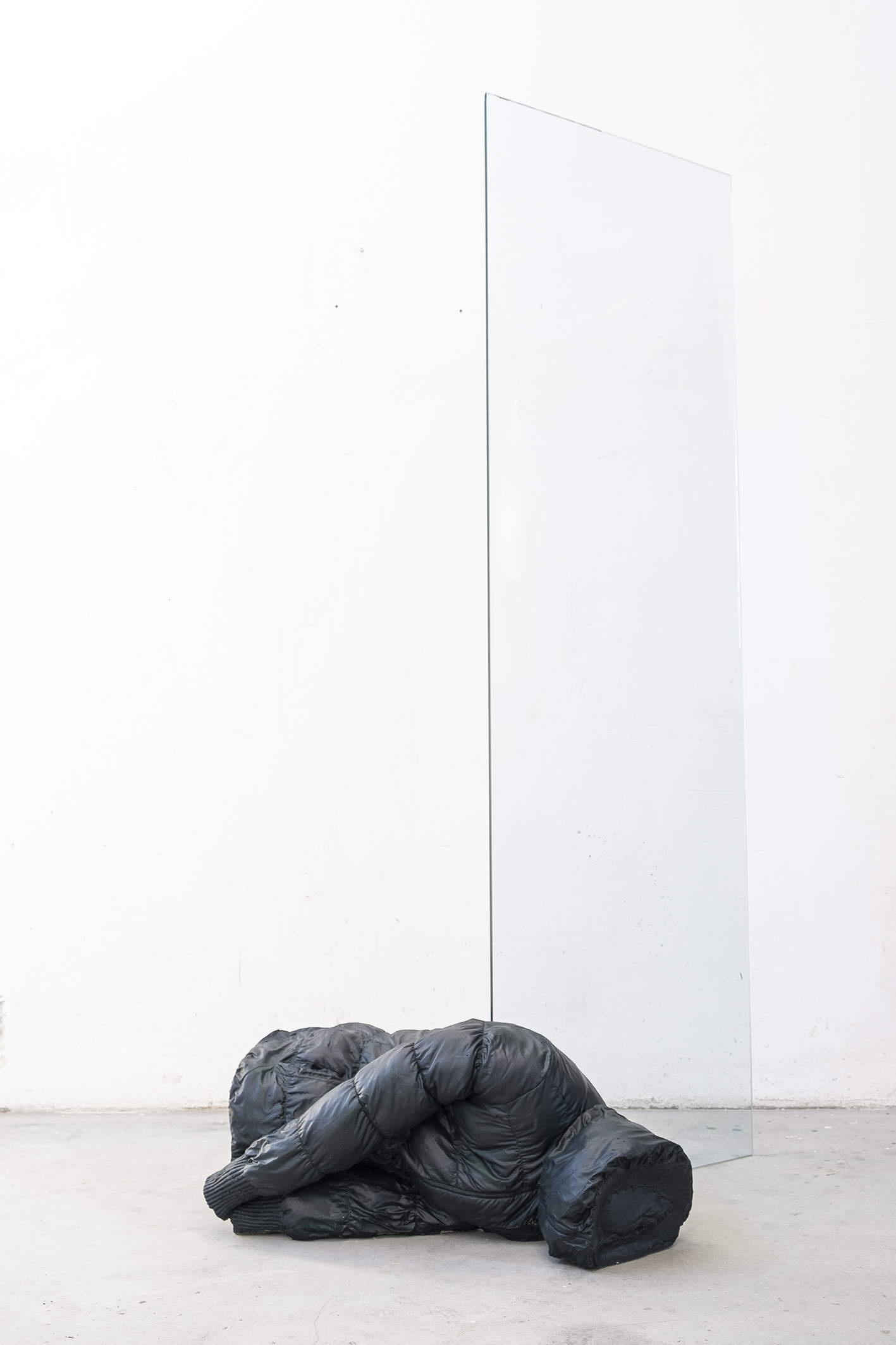
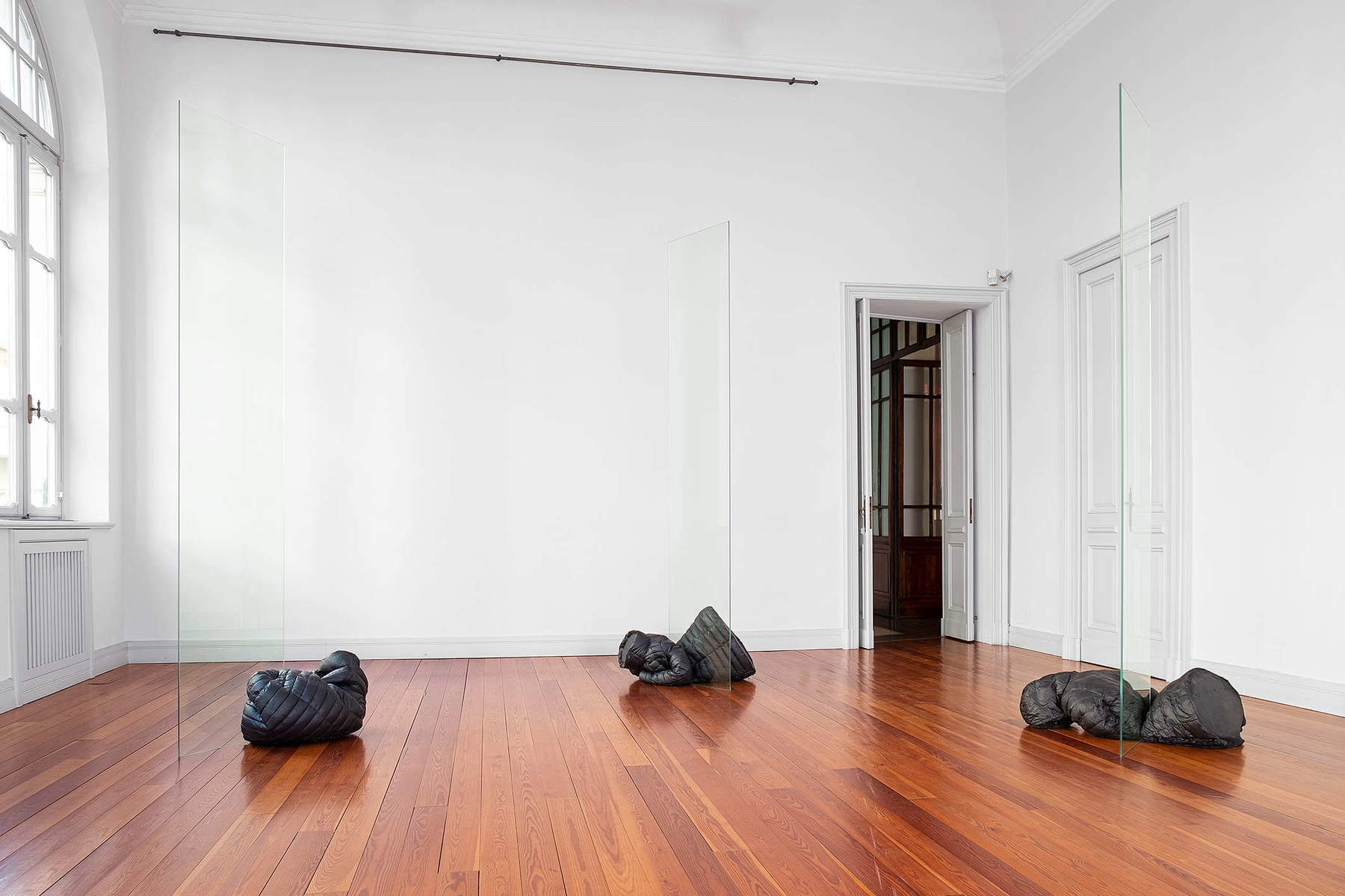
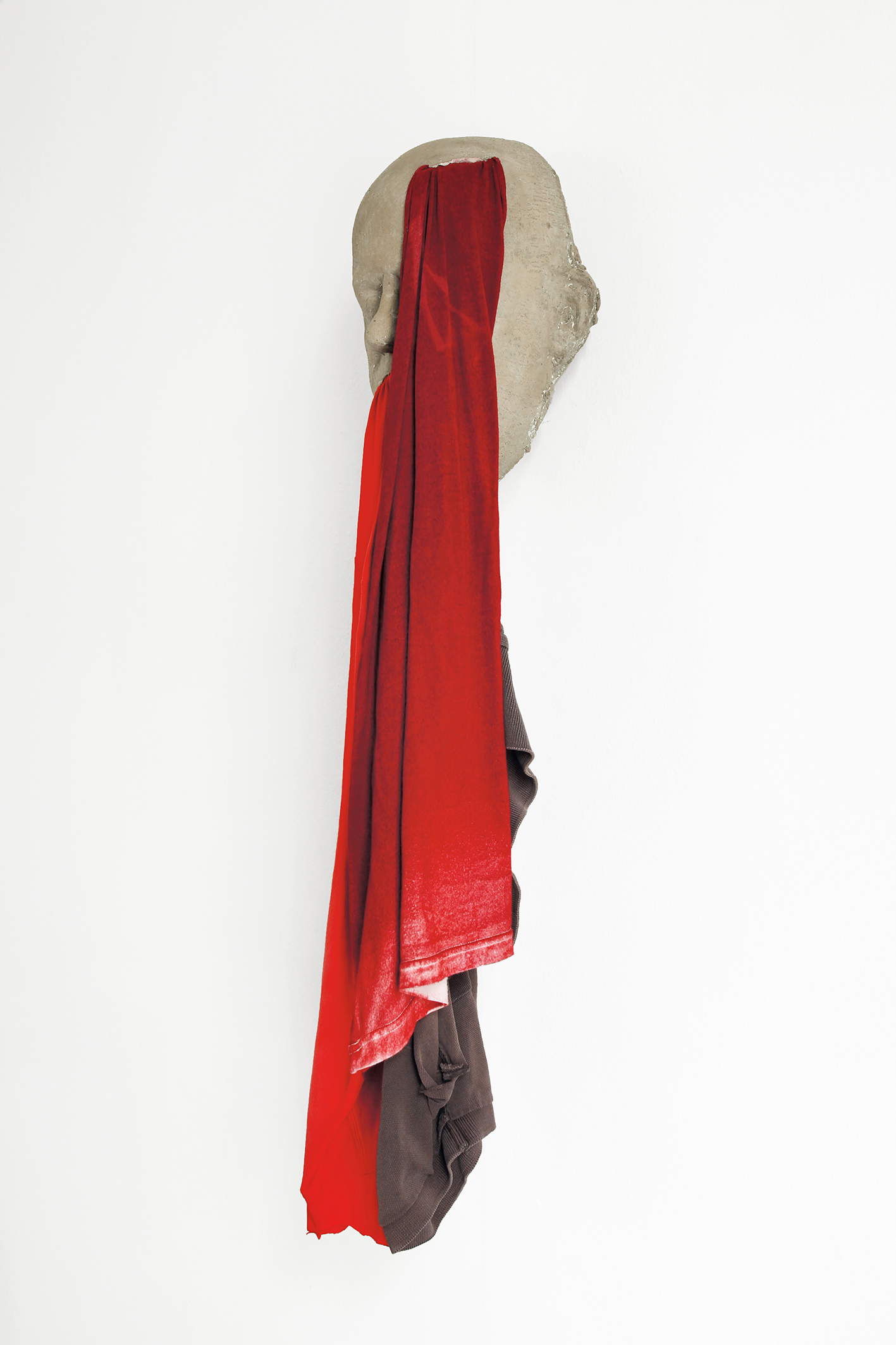
Is there also an ironic side to what you do?
I never think about irony in my work, this aspect probably emerges spontaneously.
What importance do titles of works have for you?
A title is not always necessary. Sometimes the titles come before the work, sometimes the work is contained only in the title. The title indicates a key but it does not always reveal something; rather, it is a red herring or just another interpretation.
Is there a spiritual tension in your work?
All research is spiritual because it attempts to find answers.
What is your idea of death and how do you relate to it?
The arc of life is a parenthesis between nothingness and nonexistence.
Where do you stand in relation to your work?
I love my work. I am comfortable in my workplace. When I am in my studio I only think about what happens outside this protected and privileged space.
Warning: the translation into English of the original Italian article was created using automatic tools. We undertake to review all articles, but we do not guarantee the total absence of inaccuracies in the translation due to the program. You can find the original by clicking on the ITA button. If you find any mistake,please contact us.




























